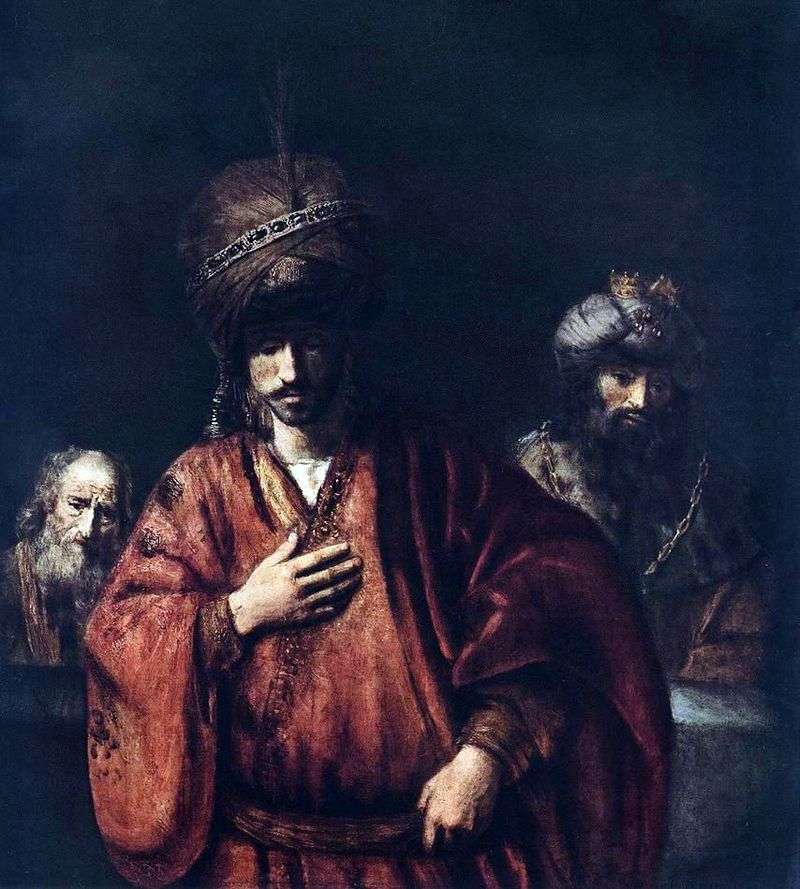
Rembrandt Harmens van Rhine – the Dutchman, the greatest artist of the golden age of painting. In his work were engravings, sketches, and drawing works in addition to the famous oil painting. But the main advantage of his rich collection was the versatility of the selected subjects and the rich gradation of the storyline. Most of the thematic collections are those that are written according to the plots of biblical parables.
This is due to the piety of people living under the yoke of church persecution and blind faith. Among the legends of interest to many creators, there was a sad parable about the Israeli king David, his faithful war, Uriah the Hittite and his wife, the war of Bathsheba, the daughter of Guardsman Eliam, close to the king. At the heart of the plot and the tragic end of the story lay the fateful love triangle. Where the protagonists were David himself, Uriah and young Bathsheba.
The instigator of the secret love affair was David, who spent the night with a beautiful woman. The result of a single night was an unexpected pregnancy of a woman, and, consequently, gossip and a direct path to participation in human rumor and discontent. By analogy with similar stories, the mighty David decided on meanness and in every possible way tried to exterminate his rival, the legitimate consort of Bathsheba.
After Uriah refused to enter his own house, which confused the patron’s plan, David ventured on the only sure means – killing an opponent in battle. Uriah was smitten. Death war untied the hands of David, and he married Bathsheba, which caused the wrath of God and damnation. Trouble after misfortune overtook the house and family of David, and he repented of the deed. Forgiveness later spread to his wives, his home, and to his children.
Despite the happy ending of the story, the authors of the canvases paid special attention to the most gloomy moments. One of them was the conversation of David and Uriah, when the warrior went to certain death. “David and Uriah” – Rembrandt’s canvas with the narration of the end of the conversation and the departure of the sad and angry Uriah from David’s chambers. Along with the grim plot, the picture itself is not replete with iridescent colors.
The author conveyed the mood of loss and understanding of the betrayal of the beloved soldier with rather dark colors, kraplak and coal soot. Once again, marking his talent as a master of chiaroscuro, Rembrandt “snatched” Uriah’s gloomy face from the darkness of the room. Nursing war is accompanied by sorrow in the eyes of an old man in the background and David’s sly eyes. These three white spots in the dusk of the interior are stingy with mimicry and eloquent at the same time. Thanks to the experience of the artist, and at that time Harmens van Rijne turned 59 years old, the picture turned out to be an adult and dreary, exact copy of the emotional experiences of the characters themselves and the elderly author.
Unfortunately, this period of creativity of the painter was the beginning of sunset. His canvases were too dark, too sad. In the distant past went detail, which demonstrated the “fresh” young Rembrandt. However, today, a true connoisseur – our contemporary does not rely on fashion in detail, he appreciates antiquity, understands the author, perceives his letter, as it should, deeply and reverently.
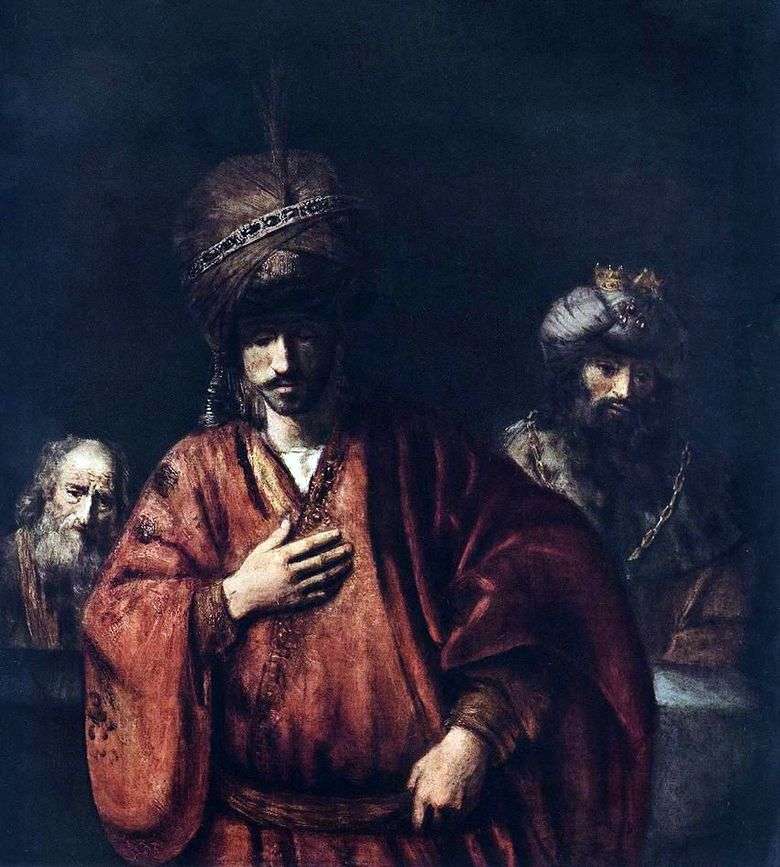 David y Uriah – Rembrandt Harmens Van Rhine
David y Uriah – Rembrandt Harmens Van Rhine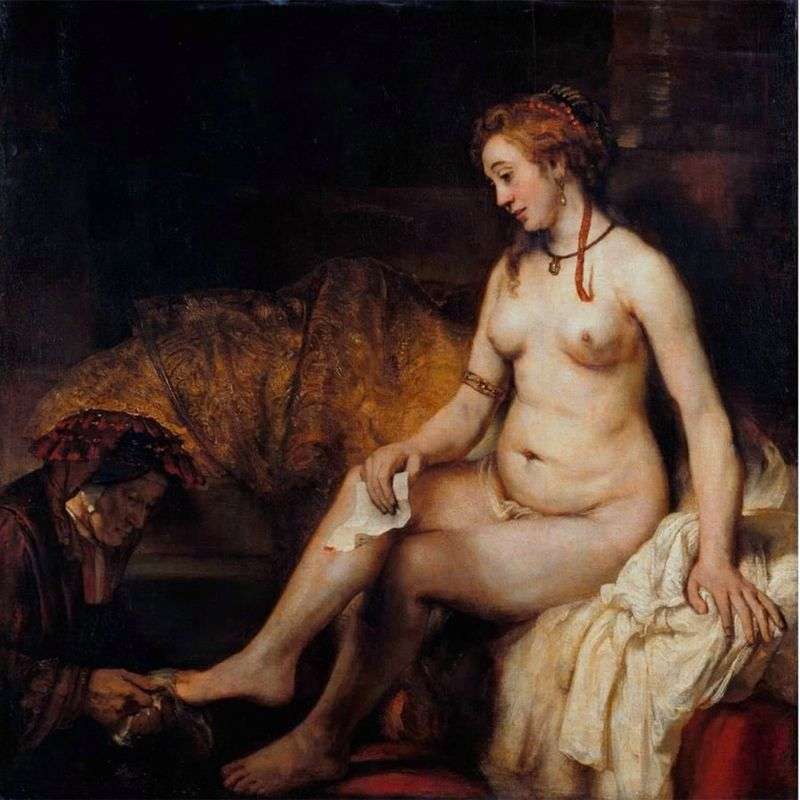 Bathsheba by Rembrandt Harmens Van Rhine
Bathsheba by Rembrandt Harmens Van Rhine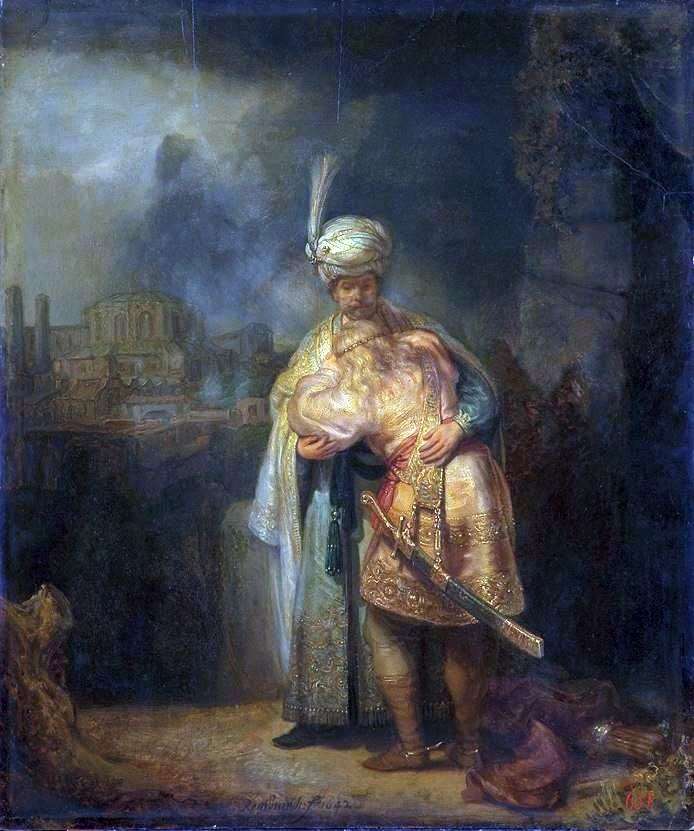 David and Jonathan by Rembrandt Harmens Van Rhine
David and Jonathan by Rembrandt Harmens Van Rhine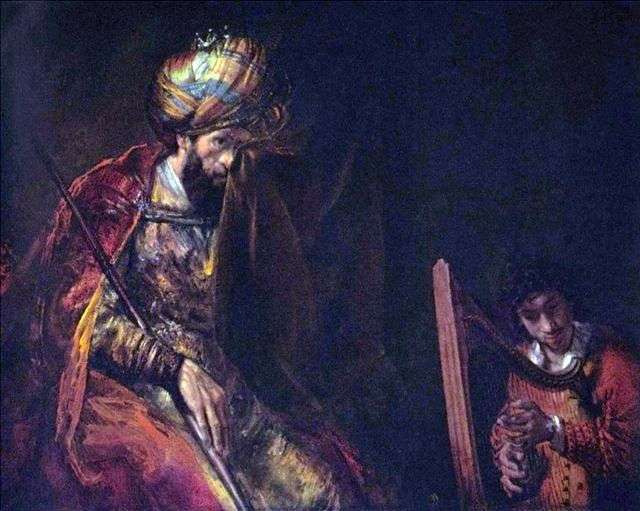 David plays king Saul by Rembrandt Harmens van Rhine
David plays king Saul by Rembrandt Harmens van Rhine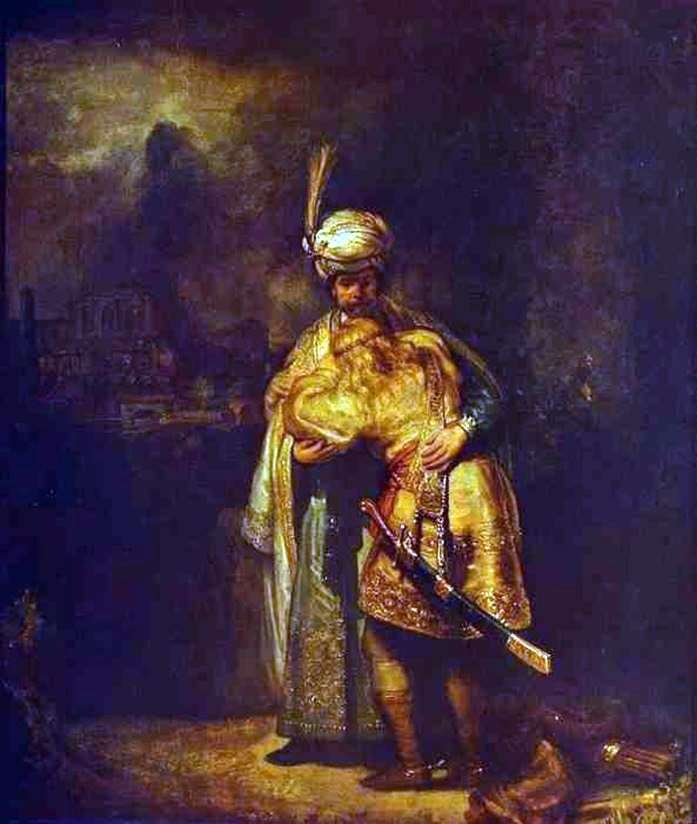 David’s Farewell to Jonathan by Rembrandt Harmens Van Rhine
David’s Farewell to Jonathan by Rembrandt Harmens Van Rhine Saskia van Eilenburg by Rembrandt Harmens Van Rhine
Saskia van Eilenburg by Rembrandt Harmens Van Rhine Bathsheba by Gustave Moreau
Bathsheba by Gustave Moreau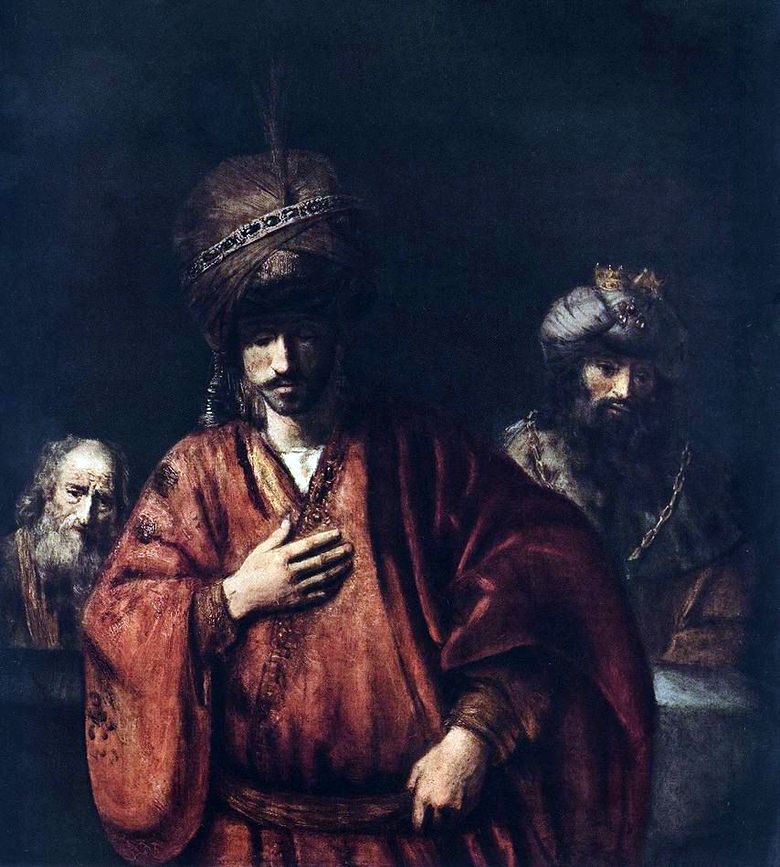 David et Uriah – Rembrandt Harmenszoon Van Rijn
David et Uriah – Rembrandt Harmenszoon Van Rijn